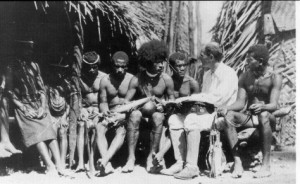Anthropology 101 – Definitions and a brief history of the discipline no comments
This week I have looked at the discipline of anthropology. In order to get a good introduction I still found is useful to read a few different introductory texts as each presents the discipline in slightly different ways. Here is what I found about anthropology as a discipline.
“The most scientific of the humanities, the most humanist of sciences”
Eric Wolf (in Erisken 2010, p. 1)
All the authors reviewed place anthropology at the intersection of social sciences and humanities. Peoples and Bailey outline 5 subfields of the discipline: physical/biological anthropology, archaeology, cultural anthropology, anthropological linguistics and applied anthropology. For the rest of this project, I will equate anthropology with the cultural anthropology subfield, which is also sometimes known as cultural and social anthropology (to satisfy both the American and British strands which emphasise culture and society respectively (Monaghan & Just, p. 12)). Eriksen defines anthropology as ‘the comparative study of cultural and social life’, with a focus on the ‘whole of human society’. He states that the discipline is about ‘how different people can be, but it also tries to find out in what sense it can be said that all humans have something in common’ (Eriksen 2010, pp. 1-4). This latter aspect of the discipline is highlighted in all three readings as something deeply fundamental.
Before proceeding to consider the approaches and methodologies of the field, I thought it would be useful to go through a brief history of anthropology, to emphasise preconceptions and misperceptions. Eriksen (2010, p. 10) notes its recent origins as an academic discipline during the late nineteenth and early twentieth century. All the authors reviewed recognise that there is a romanticised version of the anthropologist as the intrepid explorer, out to discover and study ‘unspoilt’ societies. This, they agree, might have been true until the 1970s when all of this changed (Peoples & Bailey 2000, p. 6). The traditional focus of anthropological research on, small, non-Western, ‘exotic’ societies (to demarcate it from the discipline of sociology which traditionally focused on large, Western ones) was abandoned and topics such as American bodybuilders, the decline of the middle class and family life at Silicon Valley now form part of contemporary anthropological research projects (Peoples & Bailey, p. 6). This, coupled with the fact that anthropology is no longer the prerogative of Western scholars, is important to note in our study of the discipline itself, but also of its perspective on the topic of the global digital divide.
Next week I will present the various approaches and methodologies prevalent in the field.
References
Eriksen, T. H. (2010) Small Places, Large Issues: An Introduction to Social and Cultural Anthropology 3rd edition, New York: Pluto Press
Monaghan, J. and Just, P. (2000) Social and Cultural Anthropology: A Very Short Introduction, Oxford: Oxford University Press
Peoples, J. and Bailey, G. (2000) Humanity: An Introduction to Cultural Anthropology, 5th ed., Belmont: Wadsworth/Thomson Learning
